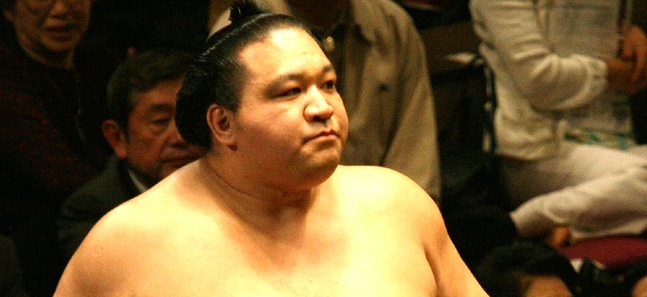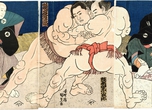5 sumo wrestlers to keep an eye on
42 wrestlers are scheduled to fight at the Hatsu Basho. We've got our eye on five in particular

Posted: Fri Jan 07 2011
Hakuba
白馬
Age: 27
Nationality: Mongolian
Current rank: Komusubi
Weight: 128 kg
This sprightly komusubi-ranked wrestler had a very promising 2010, with the May bout being his most successful yet. Entering the competition at makuuchi level, he took down two ōzeki and neatly gained promotion in time for the July contest. We can't help thinking he's got the momentum to make 2011 a special year.
Kakuryu
鶴竜
Age: 25
Nationality: Mongolian
Weight: 135 kg
Current rank: Seikwake
With a recent tendency to yo-yo between the sekiwake and komusubi rankings, Kakuryu's key statistics include wins over the four current ōzeki (Kaiō, Kotoōshū, Harumafuji and Baruto). He has yet to overturn (literally) a yokozuna, but with a relatively nimble style, 2011 could well be a successful year.
Kisenosato
稀勢の里
Age: 24
Nationality: Japanese
Weight: 156 kg
Current rank: Sekiwake
Seemingly a man of inconsistencies, despite his warrior-like name (Kisenosato translates as 'village of rare vigor'), Kisenosato is most often critisised for lacking a fighting spirit. Still, he caused major upset to yokozuna Hakuhō's Kyushu bout in 2010, and with youth on his side he may yet achieve sumo-sized things.
Kaiō
魁皇
Age: 38
Nationality: Japanese
Weight: 170 kg
Current rank: Ōzeki
The longest-serving ōzeki since WWII, and the second-longest serving in the sport's history, the big questions these days have to do with his retirement, or lack of it. Will this be his last year in the ring, and, more importantly, can he achieve yokozuna status before it's too late? The oldest wrestler in the upper divisions has been 'one to watch' for so long, it almost seems rude to demote him now.
Hakuhō
白鵬
Age: 25
Nationality: Mongolian
Weight: 153 kg
Current rank: Yokozuna
At the tender age of 25, Hakuhō holds more broken records than a skip outside an HMV store, and, vitally, the energy to go on and smash even more. A yokozuna before his 23rd birthday, he is already a sumo legend, and it's unlikely his actions inside the ring this year can do much to tarnish that.
Back to Tokyo sumo tournament: the Hatsu Basho in brief
Tweets
- About Us |
- Work for Time Out |
- Send us info |
- Advertising |
- Mobile edition |
- Terms & Conditions |
- Privacy policy |
- Contact Us
Copyright © 2014 Time Out Tokyo











Add your comment